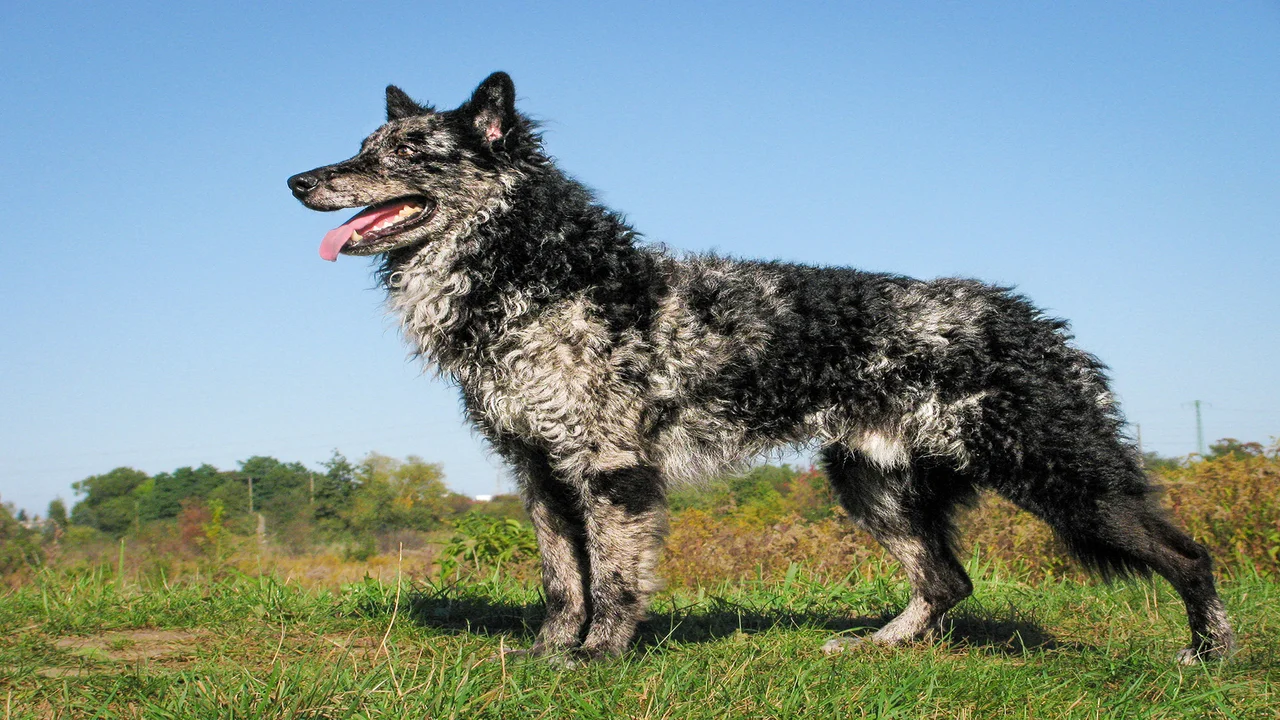Introduction
The Merle German Shepherd is a particular type of German Shepherd that stands out because of its unique coat color. “Merle” refers to the pattern in the dog’s coat. This pattern is created by a gene that modifies the dog’s coat colour, resulting in irregular blotches of fur set on a lighter background of the same pigment.
The Merle German Shepherd is a rare coat color variation of the German Shepherd dog breed. Merle causes a lightening of the base coat color and produces darker spots throughout the coat. The merle gene introduces a pattern of darker patches in the dog’s coat.
The Merle German shepherd is a beautiful and unique-looking dog, a mix of two popular breeds, the Great Dane and the German Shepherd. The Merle coat is a mix of the two breeds, with the Great Dane’s coat being the dominant one. The Merle shepherd is a large and muscular dog with a strong and agile body; they are very loyal and protective of their family and make excellent guard dogs. These are also intelligent and trainable, which makes them a popular choice for many dog owners.
This breed is a beautiful but controversial type of German Shepherd. Their coat is mottled, with patches of different colors, with the most common colors being blue and black, but it can also be brown, red, or cream.
The Merle gene is recessive, so two non-Merle German Shepherds can have Merle puppies. However, because the Merle gene is linked to deafness and blindness, many breeders avoid breeding dogs with this gene.
If you are considering a Merle German Shepherd, be sure to do your research and find a reputable breeder.
Read More: German Shepherd Mixed with Greyhound
Cost
The Merle German Shepherd is an attractive dog that is sure to turn heads when out on walks. They are some of the most beautiful dogs in the world but also some of the most expensive. A merle German shepherd can cost upwards of $2,000 because they are relatively rare and in high demand.
Coat Color and Pattern of Merle German Shepherd
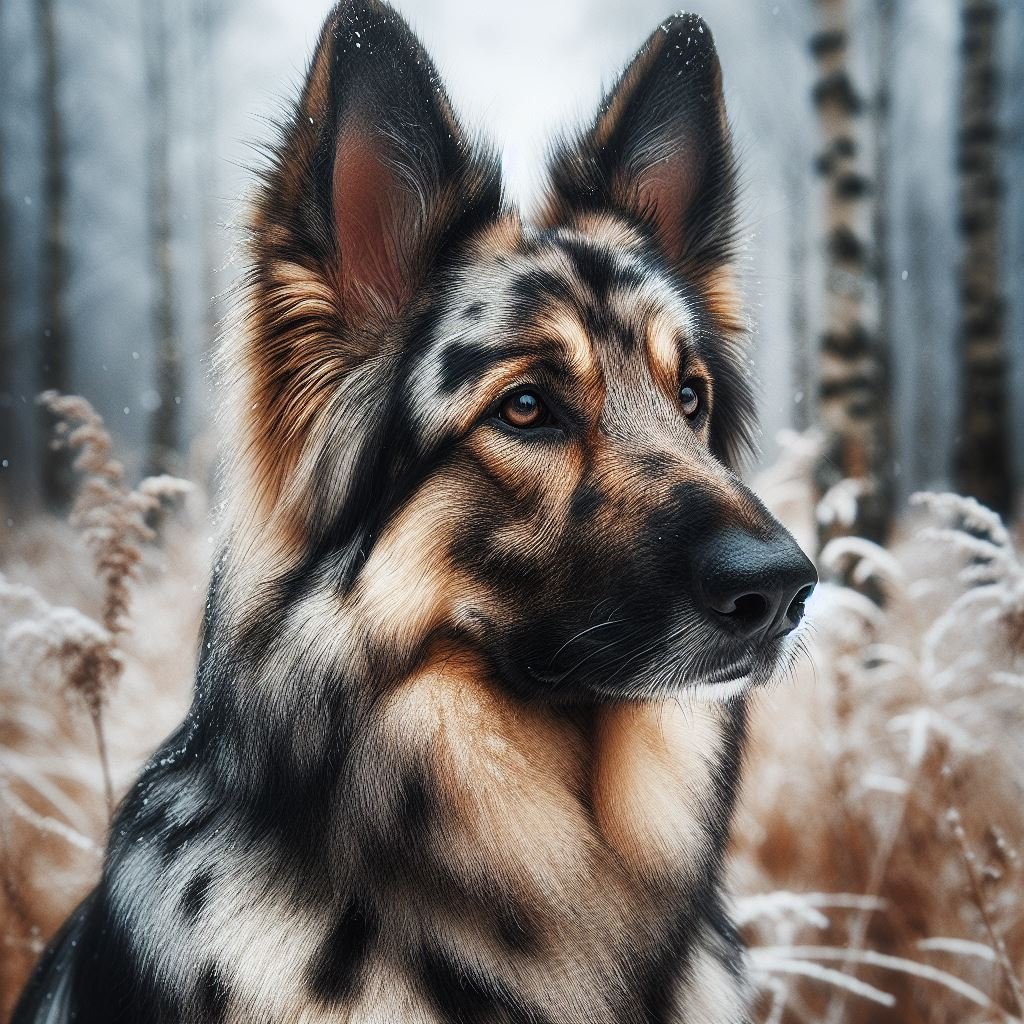
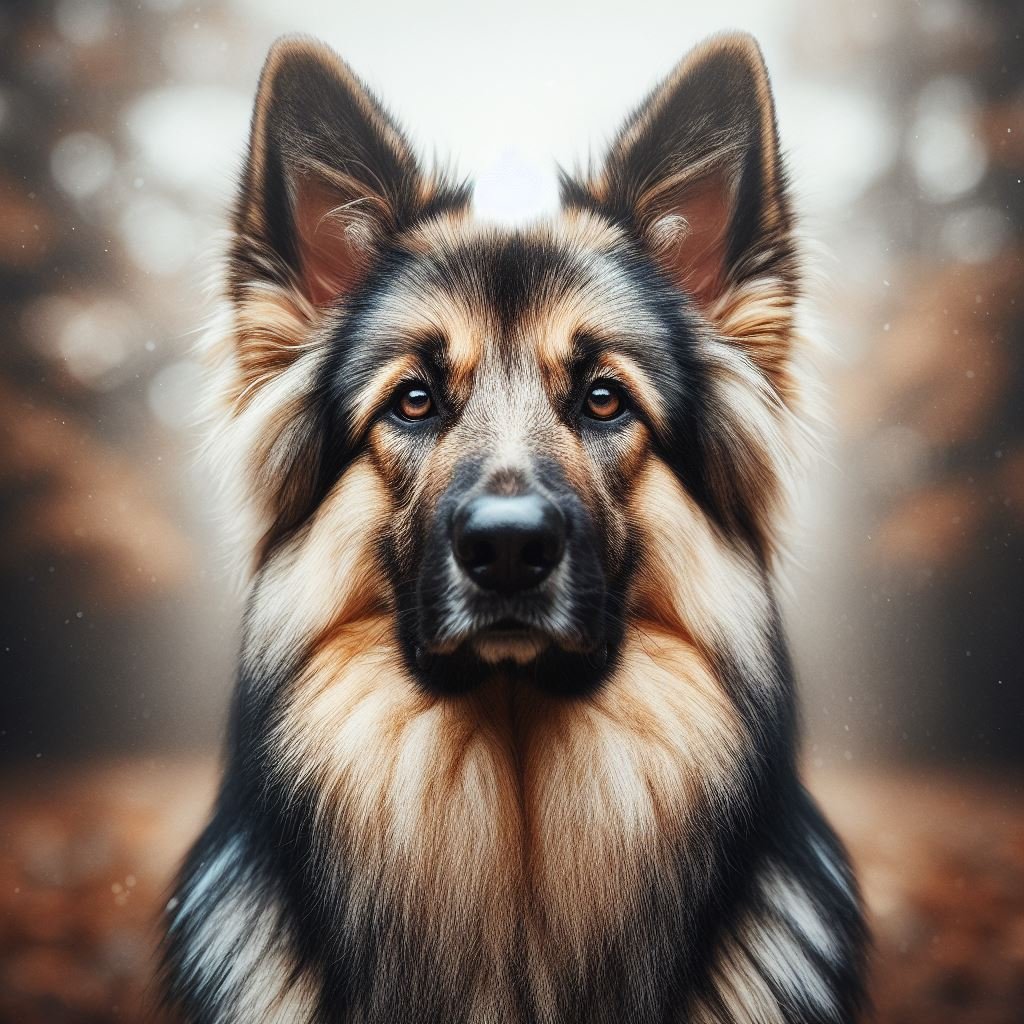

Merle German Shepherds can have two coloured patches in their coat: brown/liver (red merle) and black (blue merle). The merle pattern can affect all coat colours. The merle forms of brown are usually called “red”, and black is called “blue”, as lighter patches of black are formed throughout the coat and look slightly blue.
Characteristics
Merle German Shepherds are some of the most intelligent and trainable dogs, making them great companions for active people. They are not for everyone, though, as they require a lot of exercise and attention. If you are looking for a low-maintenance dog, a Merle German Shepherd is not the right breed for you.
Breed
Merle German Shepherds are an adorable variety of the German Shepherd breed. They are easily recognizable by their merle-colored coat, ranging from light blue to deep black. They are intelligent and loyal dogs, making them excellent companions and working dogs.
Merle is a coat pattern characterized by patches of color in the dog’s coat, which can be any color; the most common ones are blue and black. Merle is a recessive gene, so both parents must be carriers of the gene for their offspring to have the merle coat pattern.
Important Facts about Merle German Shepherds

Before you learn more about the merle German shepherd, you should first know that they are great dogs for families with kids. This is because they are relatively easy to train and are very friendly.
But they can be very independent, so they may not always listen to you when you tell them to do something. Training them with patience and consistent commands is important to make them obedient.
Genetics Behind the Merle Pattern
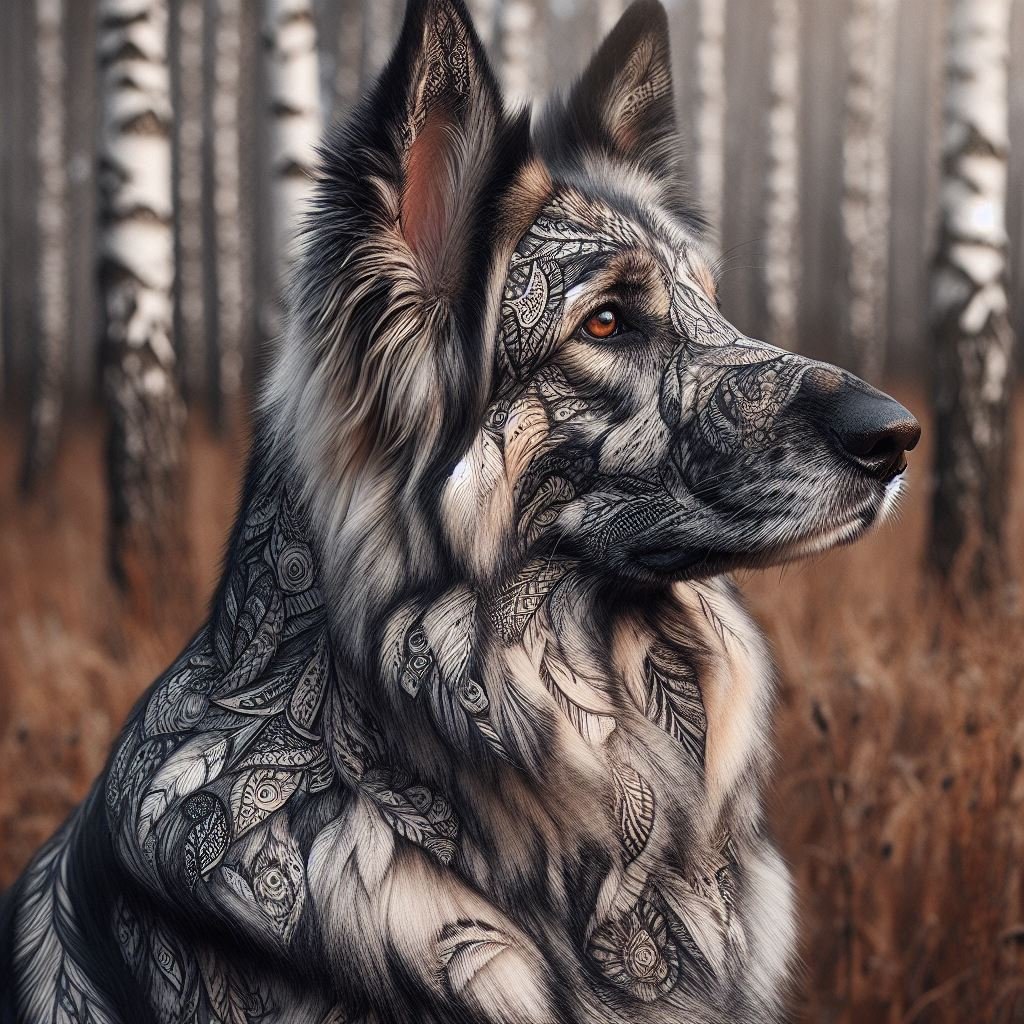


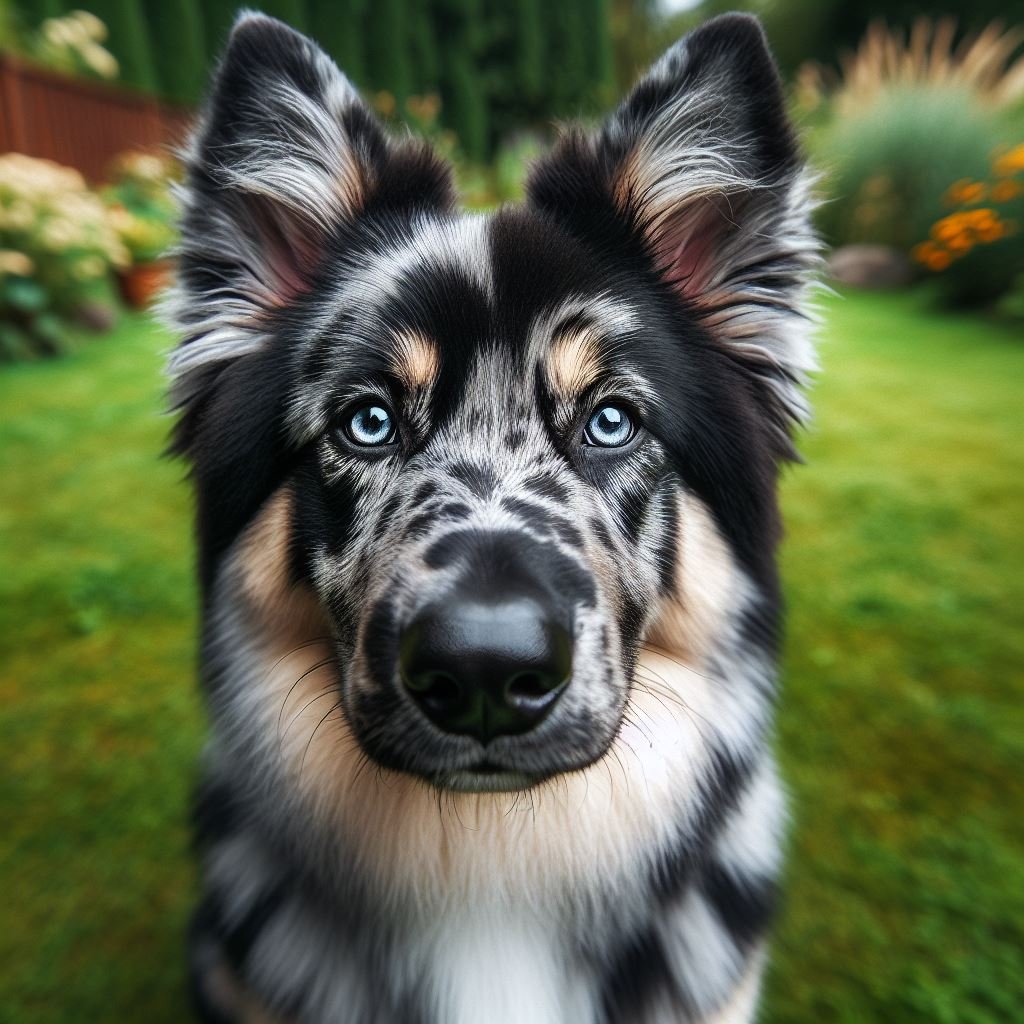


The merle pattern is due to a gene known as the merle allele. This gene is semi-dominant, meaning it only takes one copy of the merle allele to produce a merle pattern. So, every merle dog has one copy of the merle allele and one copy of the non-merle allele. Dogs with two merle alleles don’t look like merles. They usually have much more white on them, and some can be almost pure white.
Appearance
- Merle German Shepherds have a marbled coat pattern of darker patches over a lighter base color. The base coat can be grey, blue, violet, red, or white.
- Standard merle colours are blue merle (grey base with black spots) and liver merle (red base with brown spots).
- Merle coats exhibit a “mottled” look with darker patches scattered throughout. The patches can be small or large.
- Eyes are often blue or partially blue, sometimes with one eye brown and one blue (called heterochromia).
- Merles may also have white markings on the face, chest, feet, and tail tip.
Temperament
- The merle coat pattern does not affect temperament.
- Merle German Shepherds have the same intelligence, loyalty, and working drive typical of the breed.
- Proper socialization and training are essential, as with any German Shepherd.
Health
- Breeding two merle dogs often produces excessive white markings and health issues. It is not recommended.
- Potential health issues associated with Merle include deafness, blindness, eye defects, and skin disorders.
- Reputable breeders carefully select merle breeding stock to reduce health problems.
Controversy
- Merle is not an accepted color in German Shepherd breed standards. The AKC does not recognize Merle German Shepherds.
- There are concerns that Merle German Shepherds may have health problems due to irresponsible breeding practices.
- However, many Merle supporters believe the colour variation is beautiful and does not inherently impact health or temperament.
They also have a very low shedding level, so they won’t cause your allergies to flare up. They love to play and run around, so if you are looking for a couch potato, this is not the breed for you. They need plenty of exercises and will do best in a home with a backyard where they can run and play. They can keep up with your kids while running around outside. However, it is important to remember that all dogs are different and that you should never leave a child alone with any dog, no matter how well-behaved they may be.
Health Concerns
While the merle pattern is beautiful and unique, it can also be associated with health problems, primarily deafness and blindness. Having even a single merle allele raises the chance of being deaf. The presence of two merle genes dramatically increases the chance of deafness.
Conclusion
The Merle German Shepherd is a unique and beautiful breed. However, potential owners should be aware of the possible health issues associated with the Merle pattern. A Merle German Shepherd can make a wonderful pet with proper care and regular check-ups.
Frequently Asked Questions
Are merle German Shepherds rare?
Yes, merle is a rare and uncommon color in German Shepherds. Only a tiny percentage of Shepherd litters produce merle puppies.
Do kennel clubs recognize Merle German Shepherds?
No, Merle is not accepted by major kennel clubs like the AKC. Only standard color German Shepherds can be shown and registered.
What causes the Merle coat pattern?
The Merle gene lightens areas of pigment in the coat and produces darker spots. All dogs have the genetic potential to be merle.
Do merle German Shepherds make good pets?
Yes, if purchased from a reputable breeder who has health tests. Their temperament should match the typical friendly yet intelligent German Shepherd.
Are merles more expensive?
Often, yes, due to rarity. Be sure health testing was done correctly on the parents, and avoid breeders who charge exorbitant prices.
Can a German Shepherd carry the Merle gene?
Yes, a German Shepherd can carry merle as a recessive gene. Two carriers must be bred to produce merle puppies.
What colours do merle German Shepherds come in?
The most common are blue merle (gray base with black spots) and liver merle (red base with brown spots). Isabella (pale tan/fawn) and white merles also occur.
Is it safe to breed two merles together?
Breeding merle to merle doubles the merle gene and significantly increases the risk of blindness, deafness, and other issues. It should always be avoided.
Do all merles have blue eyes?
No. Merles often have partial or entirely blue eyes, but some have one or two brown eyes. Eye colour does not impact health or temperament.
Do merle German Shepherds shed a lot?
Yes, like most German Shepherds, merles shed moderately year-round and more heavily during seasonal shed cycles. Daily brushing helps manage loose hair.
Can German Shepherds be Merle?
Yes, German shepherds can be Merle. The Merle gene is dominant, so if one parent is Merle, there is a 50% chance that the puppies will be Merle. Merle German shepherds are beautiful but can also have some health problems. Health concerns are associated with this coat color, so prospective owners should research before purchasing a Merle German Shepherd. This coat color is caused by a genetic mutation and is relatively rare in the breed. Merle Shepherds are often sought after by breeders and owners alike due to their unique appearance.
What does merle mean in Australian Shepherd?
The word “merle” refers to a dog’s coat’s mottled or patchy coloring. Australian shepherds are a type of herding dog that often have this coat. This coat pattern is created by a genetic mutation and can occur in any color or combination of colors. Merle-colored dogs often have blue or green eyes, and their coats can be either short or long.
How do dogs become merle?
Dogs are born with either of two genetic mutations that give them the merle gene. The first mutation is a double recessive gene, which is thought to have originated in Australia and spread through the breed. The other is a single recessive gene, which is not as common. This can happen if a double merle dog breeds with another dog with the double recessive gene.
How do dogs become merle?
Dogs are born with either of two genetic mutations that give them the merle gene. The first mutation is a double recessive gene, which is thought to have originated in Australia and spread through the breed. The other is a single recessive gene, which is not as common. This can happen if a double merle dog breeds with another dog with the double recessive gene.
The merle color pattern results from a mutation in the melanocyte-stimulating hormone receptor (MC1R) gene. The merle gene affects the distribution of pigment cells in the dog’s coat. The mutation leads to a loss of pigment cells in random coat areas, which results in the merle patches.
Are merle dogs disabled?
There is no clear answer, as there is no definitive scientific research.
Some people believe that merle dogs may be more prone to certain health conditions, potentially leading to disability; however, there is no concrete evidence to support this claim. Ultimately, it is up to the individual dog owner to decide whether or not their pet is disabled.
Many dog breeds are being discriminated against because of the color of their fur. One such breed is the merle. Merles are not disabled; they result from a genetic mutation and should not be discriminated against.
Can you breed two merles together?
According to the Merck Veterinary Manual, Merle is a gene in dogs that creates a “pattern” of fur. Merle can be a large white patch, a stripe, or speckled. According to the Animal Genetics Association, dogs with two merle parents have a 25% chance of being born a double merle. Double merles are at risk for hearing and vision problems, epilepsy, and other neurological disorders.
Are merle dogs less healthy?
We are often asked, “are merle dogs less healthy” the answer is a resounding NO! Merle dogs are not less healthy than any other dog. They are just as healthy, if not healthier, than other dogs; they have a higher risk of contracting some diseases. Merle dogs often carry a gene mutation that affects the pigment in their coat, making them a different color than other dogs.
Is Merle Dominant in Dogs?
Yes, merle is a dominant trait in dogs, which means that if a dog has one copy of the merle gene, it will express the merle phenotype. If a dog has two copies of the merle gene, it will be homozygous for merle and express the merle phenotype more intensely.
Merle is a pattern of the piebald gene that is seen in dogs. It is dominant, meaning that if a dog carries one copy of the merle gene, it will show merle markings. It is also recessive, meaning that for a dog to show merle markings, it must have two copies of the merle gene.
What is the Difference Between Blue Merle and Merle?
The difference between blue and a merle is that blue is diluted. Merle is a pattern that can occur in any color, but blue is a specific color. The word “merle” comes from the French word for blackbird, and the pattern is often compared to a blackbird’s wing. Merle is created when there is a mutation in the melanin-producing cells of the dog’s coat. This mutation results in random patches of color, often in a mottled or brindled pattern. Blue merle is created when the merle gene is combined with the dilution gene. This combination results in a blue-gray color with patches of a lighter blue.
Blue merle dogs may have blue, gray, or silver patches, while merle dogs can have any color patches. Another difference is that blue merles typically have blue or green eyes, while merles can have any color of eyes.
Is merle a bloodline?
There is some debate over whether merle is a bloodline or not. Some people believe that merle is simply a color pattern that can occur in any dog breed, while others believe it is a separate bloodline; there is no definitive answer, but the debate continues.
